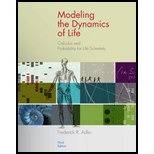
a.
To graph: The secant line to the given function at base point
a.
Explanation of Solution
Given:
The given function is
Method used:
The function and the secant line is plotted using graphic calculator.
Calculations and Graph:

The given function is
The coordinates of base point say, P are
The point at distance
The graph of the function and the secant is shown in Figure (a)
b.
To graph: The secant line to the given function at base point
b.
Explanation of Solution
Given:
The given function is
Method used:
The function and the secant line is plotted using graphic calculator.
Calculations and Graph:

The given function is
The coordinates of base point say, P are
The point at distance
The graph of the function and the secant is shown in Figure (b).
c.
To graph: The secant line to the given function at base point
c.
Explanation of Solution
Given:
The given function is
Method used:
The function and the secant line is plotted using graphic calculator.
Calculations and Graph:

The given function is
The coordinates of base point say, P are
The point at distance
The graph of the function and the secant is shown in Figure (c). We see the secant line tends to tangent line at point P .
d.
To graph: The secant line to the given function at base point
d.
Explanation of Solution
Given:
The given function is
Method used:
The function and the secant line is plotted using graphic calculator.
Calculations and Graph:

The given function is
The coordinates of base point say, P are
The point at distance
The graph of the function and the secant is shown in Figure (d).
We see the secant line tends to tangent line at point P .
e.
To graph: The secant line to the given function at base point
e.
Explanation of Solution
Given:
The given function is
Method used:
The function and the secant line is plotted using graphic calculator.
Calculations and Graph:

The given function is
The coordinates of base point say, P are
The point at distance
The graph of the function and the secant is shown in Figure (e).
We observe that points
Here, the slope of the tangent by definition is
And from the formula as the tangent line is the limiting case of secant line
Thus, the slope of the tangent line is 25.
Want to see more full solutions like this?
Chapter 2 Solutions
Modeling the Dynamics of Life: Calculus and Probability for Life Scientists
- For each real-valued nonprincipal character x mod k, let A(n) = x(d) and F(x) = Σ : dn * Prove that F(x) = L(1,x) log x + O(1). narrow_forwardBy considering appropriate series expansions, e². e²²/2. e²³/3. .... = = 1 + x + x² + · ... when |x| < 1. By expanding each individual exponential term on the left-hand side the coefficient of x- 19 has the form and multiplying out, 1/19!1/19+r/s, where 19 does not divide s. Deduce that 18! 1 (mod 19).arrow_forwardBy considering appropriate series expansions, ex · ex²/2 . ¸²³/³ . . .. = = 1 + x + x² +…… when |x| < 1. By expanding each individual exponential term on the left-hand side and multiplying out, show that the coefficient of x 19 has the form 1/19!+1/19+r/s, where 19 does not divide s.arrow_forwardLet 1 1 r 1+ + + 2 3 + = 823 823s Without calculating the left-hand side, prove that r = s (mod 823³).arrow_forwardFor each real-valued nonprincipal character X mod 16, verify that L(1,x) 0.arrow_forward*Construct a table of values for all the nonprincipal Dirichlet characters mod 16. Verify from your table that Σ x(3)=0 and Χ mod 16 Σ χ(11) = 0. x mod 16arrow_forwardFor each real-valued nonprincipal character x mod 16, verify that A(225) > 1. (Recall that A(n) = Σx(d).) d\narrow_forward24. Prove the following multiplicative property of the gcd: a k b h (ah, bk) = (a, b)(h, k)| \(a, b)' (h, k) \(a, b)' (h, k) In particular this shows that (ah, bk) = (a, k)(b, h) whenever (a, b) = (h, k) = 1.arrow_forward20. Let d = (826, 1890). Use the Euclidean algorithm to compute d, then express d as a linear combination of 826 and 1890.arrow_forwardLet 1 1+ + + + 2 3 1 r 823 823s Without calculating the left-hand side, Find one solution of the polynomial congruence 3x²+2x+100 = 0 (mod 343). Ts (mod 8233).arrow_forwardBy considering appropriate series expansions, prove that ez · e²²/2 . e²³/3 . ... = 1 + x + x² + · ·. when <1.arrow_forwardProve that Σ prime p≤x p=3 (mod 10) 1 Р = for some constant A. log log x + A+O 1 log x ,arrow_forwardarrow_back_iosSEE MORE QUESTIONSarrow_forward_ios
- Algebra & Trigonometry with Analytic GeometryAlgebraISBN:9781133382119Author:SwokowskiPublisher:Cengage
 Trigonometry (MindTap Course List)TrigonometryISBN:9781337278461Author:Ron LarsonPublisher:Cengage Learning
Trigonometry (MindTap Course List)TrigonometryISBN:9781337278461Author:Ron LarsonPublisher:Cengage Learning Algebra: Structure And Method, Book 1AlgebraISBN:9780395977224Author:Richard G. Brown, Mary P. Dolciani, Robert H. Sorgenfrey, William L. ColePublisher:McDougal Littell
Algebra: Structure And Method, Book 1AlgebraISBN:9780395977224Author:Richard G. Brown, Mary P. Dolciani, Robert H. Sorgenfrey, William L. ColePublisher:McDougal Littell  Functions and Change: A Modeling Approach to Coll...AlgebraISBN:9781337111348Author:Bruce Crauder, Benny Evans, Alan NoellPublisher:Cengage Learning
Functions and Change: A Modeling Approach to Coll...AlgebraISBN:9781337111348Author:Bruce Crauder, Benny Evans, Alan NoellPublisher:Cengage Learning



